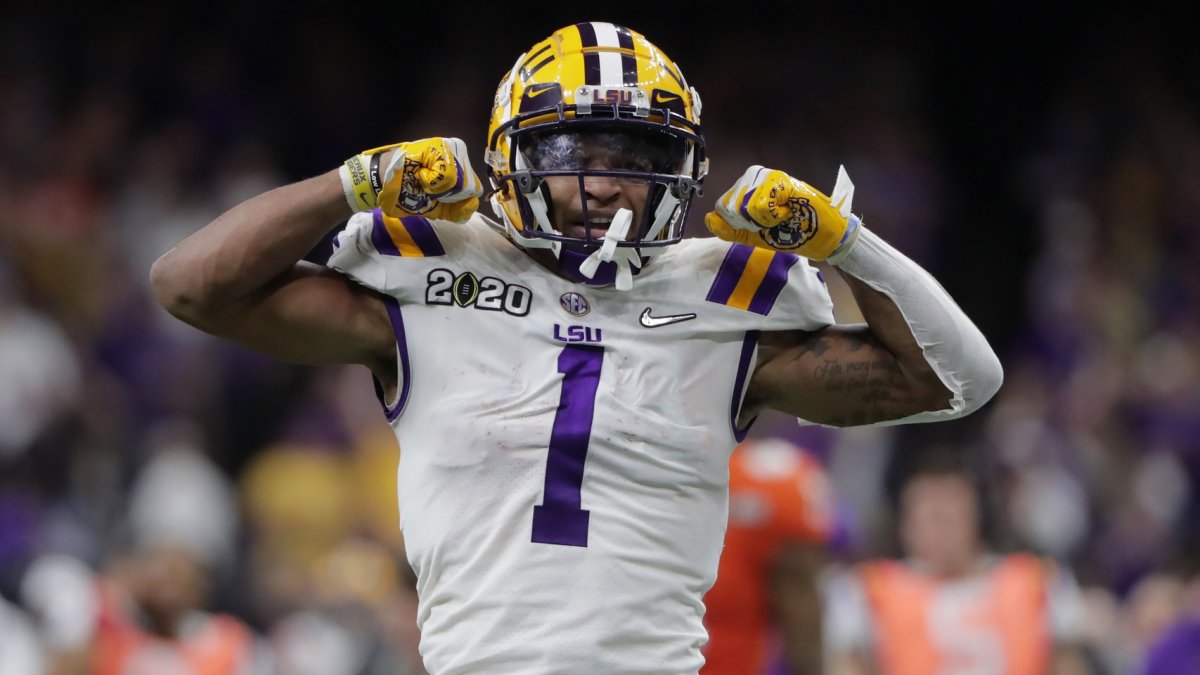Comparing current NFL draft prospects to those of years past is standard procedure in draft evaluation, though most comparisons are built on the memory recall and subjective opinion of the particular evaluator.
This will be the first in a series of articles comparing the 2021 draft prospects to prior years and picking out the most similar comps with a clearly delineated and quantifiable method.
PFF data scientist Eric Eager has done tremendous work building college-to-pro projections, which are built off the robust college data we’ve collected since 2014 and have been applied to exercises like building an “Analytics” Mock. In this analysis, I will use some of our advanced stats for comparison but primarily rely on traditional stats to go back further to compare the 2021 prospects to draft classes going back to 2006.
Without the NFL Scouting Combine this season, the important measurables like weight and 40-yard dash will be reported through the various pro days.
View PFF's 2021 NFL Draft position rankings:
QB | RB | WR | TE | T | iOL | DI | EDGE | LB | CB | S
METHODOLOGY
The comps below were derived from a two-step process. First, I converted all the most statistically relevant stats and measurables to percentiles based on the thousands of prospects who have entered the NFL since 2006 at each position. Then, I filtered the total universe of past prospects by those who had draft positions, weight and 40 times within a 10th percentile in either direction of LSU WR Ja'Marr Chase. For undrafted players, I assigned a numerical draft position of 300.
The rest of the matching features were transformed by principal component analysis (PCA). I found the closest statistically comparable players by the euclidean distance between the players' principle components, listed in the top 10 below.
The metrics for PCA are career market shares for receiving yards and receiving touchdowns, best-season market shares for receiving yards and touchdowns, yards per route run, and yards per reception.
For Chase's draft position, I’m using an estimate based on the mock data collected at GrindingTheMocks.com. For the weight and 40 time, I’m using the numbers from his pro day, with a 0.03-second penalty added to the 40 time to reflect the uncertainty of pro-day timed measurements.
Most comparable players
Chase has been the front-runner for first wide receiver drafted for more than the past year, and he didn’t do anything to dissuade NFL teams from making that a reality at his pro day. He ran a 4.38-second 40-yard dash (98th percentile) while weighing in at 201 pounds. He also posted a 41-inch vertical (96th), 13-foot broad jump (96th) and 3.98-second short shuttle (97th).
You could argue that the 6-foot Chase is a bit on the smaller side for a prototype top-10 pick, but that receiver archetype is less important in today’s NFL following the success of players such as Stefon Diggs.
Chase didn’t play like a smaller wide receiver in college, often looking like a man among boys as a sophomore.
Ja’Marr Chase vs Vanderbilt is NSFW
(h/t @ConnorJRogers)
— PFF College (@PFF_College) April 5, 2021

Chase’s top comp is Odell Beckham Jr., a logical choice considering size, draft position and statistical profile. And because Chase opted out of the 2020 season, his stats are being compared to historical draft prospects who had one or two years longer to develop their games. Chase’s dominant 2019 season happened when he was a true sophomore and only 19 years old.
Exclusive content for premium subscribers

WANT TO KEEP READING?
Dominate Fantasy Football & Betting with AI-Powered Data & Tools Trusted By All 32 Teams
Already have a subscription? Log in




 © 2025 PFF - all rights reserved.
© 2025 PFF - all rights reserved.